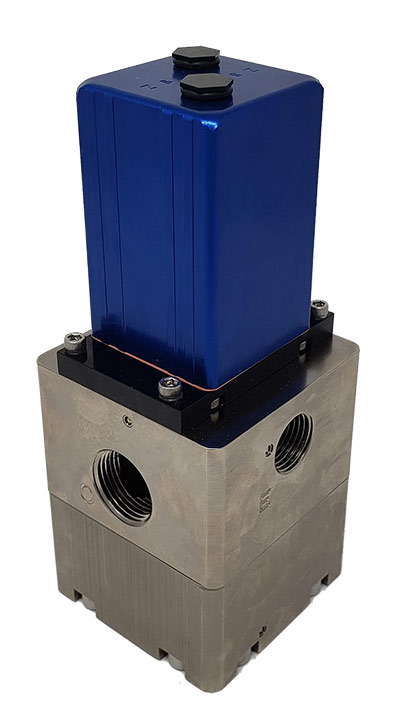When thinking of hazardous locations, one’s mind conjures an oil/gas drilling rig, refinery, or underground coal mine — all these locations have in the past utilized traditional pneumatics as risk reduction because they do not have a spark risk, which a solenoid’s electrical actuation requires and creates. Expanding our view of hazardous locations, we should include the gases which are passing through the valves, as those could be combustible, caustic, or generally a hazardous material.

Electronic regulators can be used to control hazardous media directly or indirectly with volume boosters for increased flow rates and speed. A pressure regulator or flow control valve can be designed and built using materials that will provide reliable and safe operations in a hazardous environment or for conveying and controlling a hazardous gas. Like other areas of electrical controls, the solenoids powering the valves have evolved and provide options for safe electropneumatic control of mechanical devices in hazardous locations or control of hazardous gases.
These coils are encased in an enclosure to protect the hazardous location from being exposed to spark, arcs, and dangerous temperatures that could result in combustion. The enclosures are designed to minimize gaps and provide a tight seal to the mechanical components isolating the solenoid from the ambient gas or dusts (such as sawdust and sugar dust which are highly combustible) surrounding it.
These solenoids come specified to meet either mining or the chemical industry flammability expectations. A common one is the ATEX/IECEx certification from the European Union or the UL Hazloc specification for the United States. Another common approval is FM approval, which is a third-party testing and certification services that tests property loss prevention products and services—for use in commercial and industrial facilities—to verify they meet rigorous loss prevention standards of quality, technical integrity and performance.
The certifications divide the environments into two segments — below ground (typically mining) as Group 1 and surface exposures (gases and dusts) as Group 2. The solenoids are then further refined to the application by the designer through specifying the area classification, protection concepts, gas sub-divisions, and finally temperature classification.
If using an electropneumatic pressure regulator or flow control in a hazardous location or to control gases, it is reasonable to request a certificate meeting the standards. The solenoid will be marked indicating it is FM, ATEX or UL approved for hazardous locations. With the appropriate solenoids there are very few applications that these valves cannot be utilized.
Filed Under: Air Preparation & Regulation, Components Oil Coolers, Engineering Basics, Pneumatic Tips, Valves & Manifolds